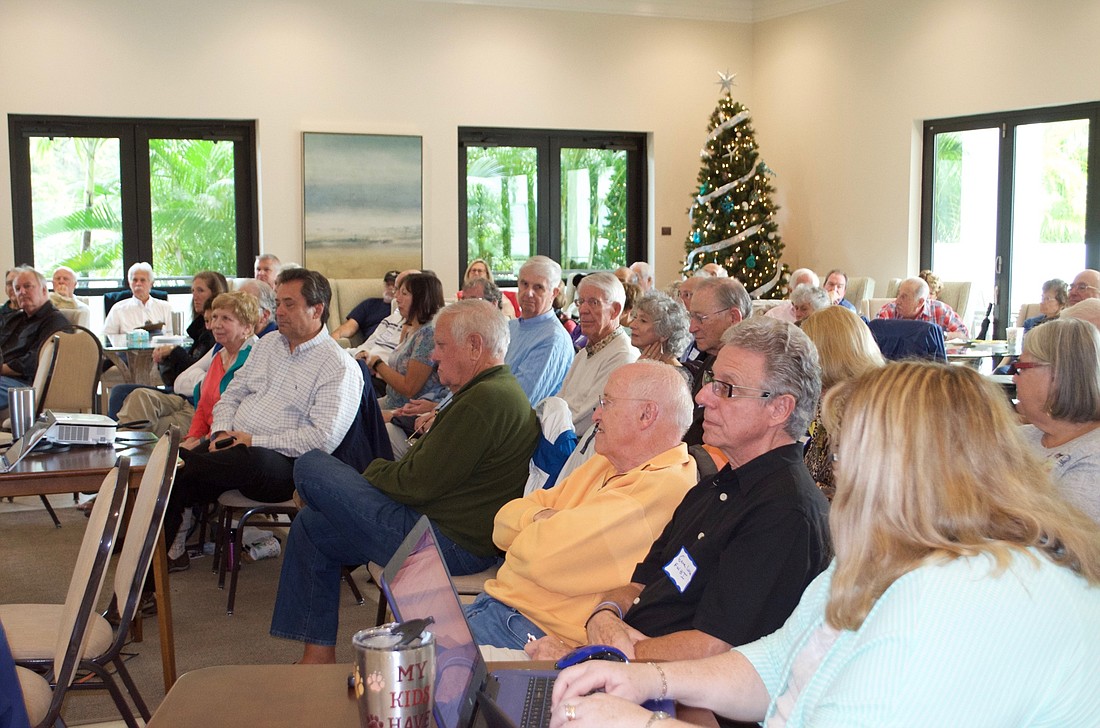- November 26, 2024
-
-
Loading

Loading

Florida needs a red tide czar to lead the way on red tide research and mitigation of its effects on coastal communities. That’s what Tom Freiwald and Lenny Landau of the Longboat Key Revitalization Task Force told members of the Federation of Longboat Key Condominiums during a Saturday morning presentation at The Players Club.
“Who is in charge of controlling red tide?” asked Freiwald. “There is no red tide leader in the state of Florida.”
A mix of state, local and federal agencies, public and private, all have a role in monitoring, warning, studying and cleaning up, but no one agency is in charge, said Freiwald in presenting his group's proposal, entitled "The Red Tide Crisis: Will Paradise Survive.''
Though the most recent water samples along Florida's gulf coast have found red tide in low and background concentrations, the state is still dealing with and recovering from one of the worst outbreaks in recent memory. Locally, red tide's effect struck in force beginning in late July and blanketed the region with the carcasses of dead sea life on the beaches and their associated stench.
Waterfront businesses in many cases reported double-digit percentage losses compared to late summer 2017 while local government agencies employed a variety of methods, and spent thousands, to clean up the mess.
One of the first actions taken over the summer was an influx of cash, but, Freiwald said, additional spending is not always the right move. "The solution to move forward isn't to spend on resources but rather focus on coordination with a central authority,'' he said in an interview in advance of the presentation.
Landau, who looked into the science of red tide, said the associated micro-organism, karena brevis, thrives in bright sunlight in water temperatures between 55 and 86 -- conditions that are frequently present in the Gulf of Mexico. Not so in the Atlantic Ocean, though red tide outbreaks exist on Florida's east coast as well.
“The water here does not get cold enough,” Landau said, adding this year's outbreak is really a continuation of last year's, not a new phenomenon.
It also doesn’t help that 30 percent of Florida homes use septic tanks, which means pollution and toxins can leech their way into waterways and into the gulf. Karena brevis occurs naturally but can grow when exposed to such manmade pollution, fueling the coastal effects.
Another contributing factor, according to the Task Force's research, is more far-flung. Lake Chad, in central Africa on the southern edge of the Sahara Desert, is drying up. Iron-rich dust from the lake bed has been consistently carried west on the prevailing winds and ends up in the Gulf of Mexico, Landau said.
“To control red tide, you have to address the nutrients it needs,” Landau said. “You have to reduce pollution from sewage leaks, spills, dumps and septic tanks.”
Freiwald said state Senate Bill 552, passed in 2016, which was designed to regulate and curtail the runoff of pollutants, is not working because enforcement methods weren't written into it.
He said Gov.-elect Ron DeSantis needs to follow through with funding for the Florida Center for Red Tide Research, which was proposed by Gov. Rick Scott in September. He also said Longboat should take a page from Chesapeake Bay’s playbook and look at how that body of water went from one of the dirtiest in the country to one of the cleanest once a single agency, the federal Environmental Protection Agency, took the lead.
But why make this presentation to condo owners on Longboat Key? The idea is to deliver the information to a wide swath of potential stakeholders through local residents with connections.
“We need people who are able to pick up the phone and call the governor,” said George Spoll, president of the Federation of Longboat Key Condominiums. “Everyone is looking for a leader. Let’s start right here. We need someone accountable.”